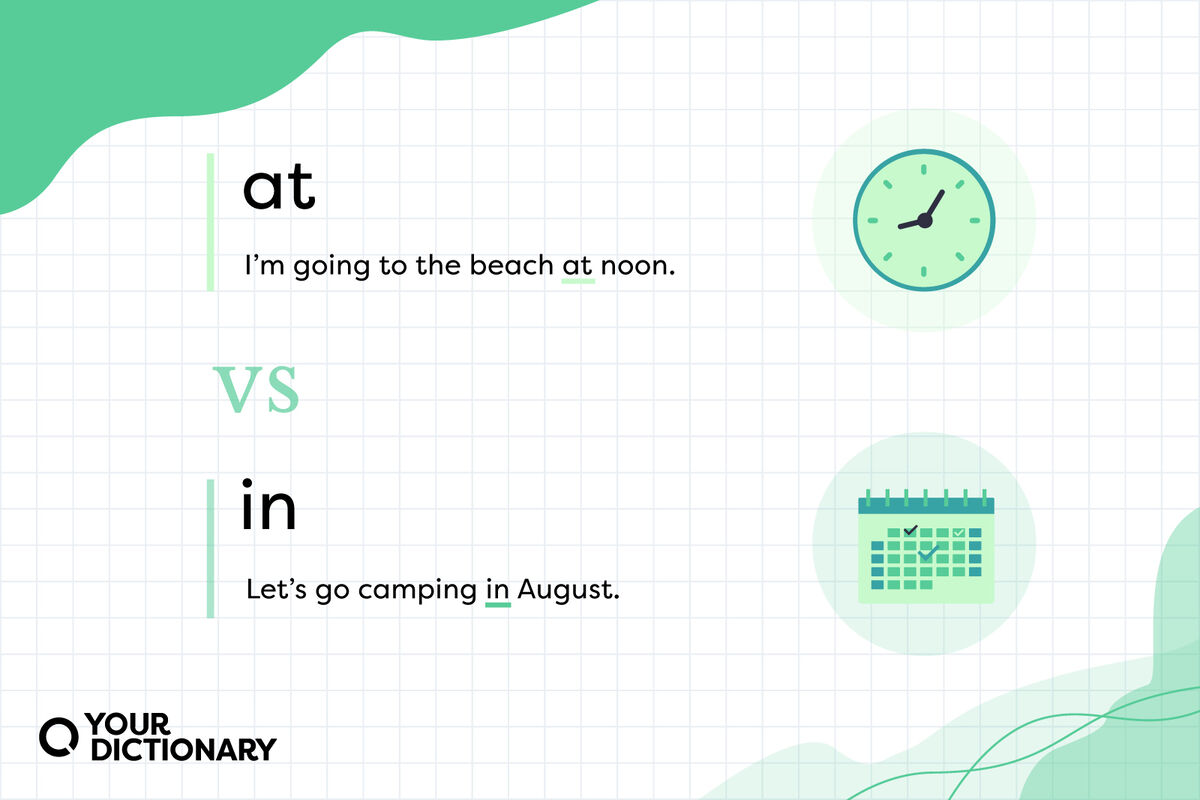
The preposition battle is on. Break down how to use “at” vs. “in” when talking about time and place through examples. Not sure about prepositions? That is covered too.
Using Prepositions Correctly
Prepositions in a sentence can cause confusion, especially when it comes to using one preposition over another. Before you can understand when to use “in” and “at,” it’s important to cover what a preposition is in the first place.
A preposition typically comes before a noun and provides a relationship to another word or element in a sentence. For example, Susan is at the corner. “At” is telling you where Susan is. “In” versus “at” isn’t a battle royale, but it’s still important to know the difference when mastering the English language.
Prepositions of Time and Place Examples
While there is a long list of prepositions you can use in sentences, “in” and “at” are two common ones used for time and location. Even if you know the rules for prepositions, these can still get a little confusing.
Break down when to use “at” vs. “in” through preposition examples.
“At” vs. “In” for Location
Deciding which word you should be using comes down to a question of where.
- “At” is used when you are at the top, bottom or end of something; at a specific address; at a general location; and at a point.
- “In” is used in a space, small vehicle, water, neighborhood, city and country.
Location Sentence Examples for “At”
Examples work to really clarify how “at” is used in action.
- Specific Address: You can visit us at 123 Wilson Drive.
- General Location: I will meet you at the school.
- Intersection: The bus station is at Marble Street and Red Drive.
- Specific Location: I’ll see you at home.
- At a Point: We can meet at the traffic light.
- Bottom of Something: My bag is at the bottom of the stairs.
Examples of Using “In” for Locations
When it comes to “in”, you know that its usage is different. That’s because you’re typically describing a location that’s inside of something. Explore how “in” is used in sentence examples.
- In a Space: The keys are in my bag.
- Small Vehicle: Go get in the car.
- Water: We are going swimming in the pool.
- Neighborhood: My friend lives in Greektown.
- City: That school is in Caro.
- Country: We live in the United States.
It’s Time to Use “In” and “At”
Just like there are rules for using “in” vs. “at” for location, each will follow specific rules for time as well. Breaking these down can make them easier to remember.
- “At” is used for particular points in time and with holidays that end without “day.”
- “In” is added with parts of the day, seasons, years, months or centuries.
Generally, holidays that do end with “day” would use the word “on” instead, as in, “The fireworks are scheduled for 9 p.m. on Independence Day.”
Sentence Examples of “At” for Time
Fun sentences that show how “at” is used can make the difference so much clearer. And, if you think you have the hang of it, you can try making examples of using “at” for time yourself.
- Point in Time: The party will start at 6 o’clock.
- Clock Time: I hope we see you at 10 a.m. for brunch.
- Midnight: Did you know that the New Year starts at midnight?
- Noon: I’m going to be on the beach at noon.
- Holidays Without Day: We hope to see you at Easter.
Constructing Sentences Using “In” for Time
Writing sentences for time with “at” was a breeze. See how you can use “in” in a sentence to gain preposition mastery.
- Parts of the Day: I will see you in the afternoon.
- Seasons: The flowers will bloom in spring.
- Years: I was born in 1989.
- Months: Let’s go camping in August.
- Centuries: There were a lot of changes in the 20th century.
Getting Your Placement Perfect
The English language has a lot of interesting rules. Knowing how and when to use prepositions correctly for time and place is just one of them. After mastering “at” and “in”, you might try taking on the correct usage of in and on.